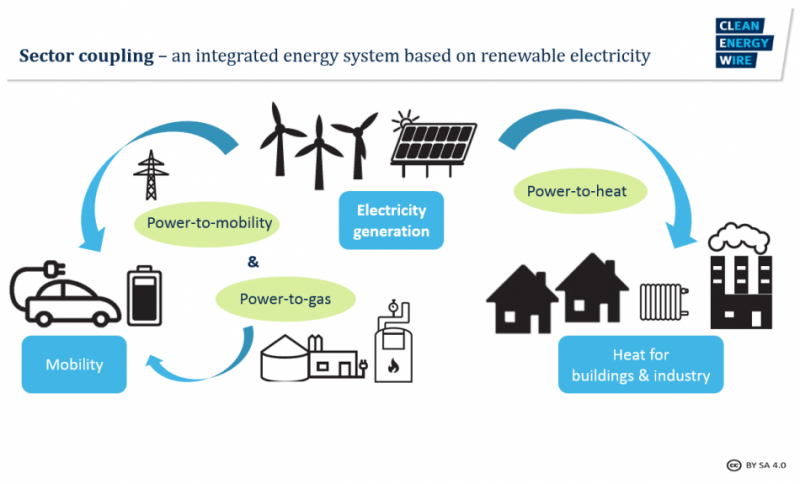
News
Integrating climate-compatible and sustainable energy and transport systems on islands
Advancing electric vehicles based on domestic renewable energy
Blogpost written by Aravind Dhakshinamoorthy, Alexander Ochs and Maria van Veldhuizen, LEDS Energy Working Group / SD Strategies
Rapa Nui, commonly known as Easter Island, lies in the Pacific Ocean, 3700 kilometers away from mainland Chile. It experiences frequent traffic congestion on its limited road network of just 50 kilometers. More than 3000 fossil-fueled private cars already crowd the island, contributing heavily to local pollution, and motorization rates are set to increase even further. The use of private cars is not only environmentally unsustainable but also economically inefficient, as transporting fossil fuel to the remote island is expensive, and therefore heavily subsidized by the government. Electric vehicles powered by locally generated renewable energy present a cleaner, more affordable alternative, with several additional social and commercial advantages.
Please find case studies of the current energy and transport situation in the islands of Rapa Nui (Chile), Cat Ba (Vietnam), and Romblon (Philippines) here.
The situation is similar on many islands in the Pacific, the Caribbean, and elsewhere: residents and governments pay extremely high prices for often unreliable services in both the power and mobility sectors. Despite their small contribution to CO2 emissions, islands have a lot to lose from carbon intensive transport systems, from deterioration of crucial ecosystems to negative impacts on public health and quality of life. The islands’ transport and energy systems are also highly vulnerable to the impacts of climate change, including rising sea levels and increasingly intense extreme weather events.
Special opportunities for islands
As renewable energy generation technologies are now more affordable and reliable than their fossil fuel-based and nuclear predecessors – globally, and particularly in remote and unconnected areas such as many islands – and as electric vehicles (EVs) are reaching cost parity with conventional vehicles, electrification of the transport sector based on domestic renewable energy resources such as biomass, sun, water, or wind is quickly becoming a no-brainer. The renewable energy generation potential on most islands is immense – in sharp contrast to their fossil fuel resources – and an electrified transport sector can help to achieve economies of scale for renewable generation, including by absorbing oversupply from intermittent sources.
Due to their limited demand and market size, small islands also offer a unique opportunity to minimize carbon lock ins and achieve a swifter transition to cleaner energy sources. They require smaller capital investments to roll out electrified mobility, as their limited road networks need fewer charging stations. Islands thus have the opportunity to swiftly decarbonize their transport sectors using domestic renewables, ensuring local economic growth and fiscal health as well as improved public health and quality of life, and enhancing the sustainability, climate resilience and independence of their communities.
Roadmaps for deep sectoral integrations
Decarbonizing the transport sector through indigenous renewables can have cross-sectoral impacts. For example, the deployment of renewable energy generation capacity results in the creation of jobs and electrified public transport can empower women and marginalized communities. Appropriate planning and road mapping is required to maximize these co-benefits. Road mapping is important in island contexts as a rapid uptake of electric mobility without an increase in renewables would result in higher emissions, as the islands currently rely heavily on fossil fuels.
Road mapping is also key because each island has its own unique set of challenges, based on its demographics and its geography, which translate to specific priorities. For example, the energy system of Vietnam’s Cat Ba Island is less carbon intensive, as it is connected to the mainland, where 43% of energy is sourced through hydro. This means that sustainable electrified public transport on Cat Ba would require only the addition of micro-scale PV generation to meet additional demand.
Many islands are highly dependent on the tourism industry. Cleaner air and less road congestion is likely to enhance their attractiveness as a destination, and the electrification of public transport in tourist hotspots could generate enough revenue to counterbalance the high initial costs of EVs. The recent LEDS LAC and LEDS Energy Working Group event on sustainable energy and transport integration evaluated these aspects within the island context, highlighting the potential islands to become trailblazers of sustainable energy and transport sector integration.

The unique challenges and opportunities of islands require that the design and implementation of the integration be based on local, island-specific assessments. A recent report not only makes a case for integration of sustainable energy and transportation sectors, but also proposes two methodologies to help islands to identify their own preferred pathway to sustainability. The first is the development of a stakeholder-oriented sustainable mobility plan for islands (SMPI) based on the Avoid-Shift-Improve framework. The second, a multi criteria decision making approach, allows policymakers to select the optimal scenario for their island based on the relative importance of various criteria.
Avoid, Shift, and Improve
The Avoid-Shift-Improve framework is a comprehensive strategy that can be deployed to help integrate the sustainable energy and transport sectors. The framework is based on three pillars and helps to develop a comprehensive solution to reduce GHG emissions, energy consumption and transport congestion through more sustainable and resilient mobility systems.
Avoid
All measures under this pillar aim to increase the efficiency of the transport sector; to reduce overall demand for motorized transport and reduce trip numbers and lengths. For example, Romblon Island has inadequate public transportation and uneven distribution of economic activity. Through strategic spatial planning, the density of communities can be increased and travel distances for essentials reduced. These and other measures directly contribute to avoiding unnecessary freight movement and passenger trips.
Shift
This pillar focuses on encouraging and enabling residents to move towards increasingly sustainable methods of transport and to improve travel efficiency. Effective public transport systems must provide services that are dependable, frequent, affordable, and fast. On Cat Ba Island, for example, public transport is currently financially inaccessible to many residents. Electric rickshaws and two-wheelers are attractive options for small islands with low-density settlements. Providing these options and attractive public transport services helps to shift consumers towards sustainable mobility systems.
Improve
The third pillar aims to increase vehicle efficiency by introducing EVs to eliminate the pollution caused by conventional vehicles. This requires the provision of incentives for the uptake of EVs and renewable energy technology, such as subsidies for residents to install PV rooftop systems to support EV demand. In addition, the government should set an example, for example by electrifying its own vehicle fleet first. Capital investment requirements for these initiatives can be met with funds reallocated from fossil fuel imports.
Employing Multi-Criteria Assessments
The multi-criteria assessment methodology encourages transparent and inclusive decision making by allowing stakeholders to allocate weights to different criteria. Based on the priorities that emerge from this analysis, multiple pathways towards the intended end goal can be evaluated qualitatively and quantitatively. This methodology facilitates more accessible and straightforward decision making, as stakeholders communicate their priorities through the weighting of criteria instead of by presenting independent scenarios themselves.
The evaluation criteria used in the multi-criteria assessment methodology must be collectively defined and can be knock-out (yes/no), qualitative (more or less desirable) or quantitative criteria (financial costs). These criteria must be clearly defined and must be aligned with the decision-making objective. Once criteria have been defined, a decision matrix is developed with the predefined scenarios on one axis and the weighted criteria on the other. This matrix allows for the presentation of results in a visual form, which aids comparative analysis. Once the weights have been allocated, the final step is tallying the score for each scenario. Stakeholders should then be invited to discuss the results and jointly recommend a course of action. This tool aims to allow islands to pick the development pathway that is best suited to their specific economic, social, and environmental characteristics and priorities.
Inclusion of a financial needs assessment & policy toolbox in the methodology
The methodologies presented in the report, ASI and MCA, will result in key components of a roadmap for the integration of sustainable energy and transportation systems. Building on this foundation, an implementation plan can be designed, focusing on the immediate challenges; as well as a policy toolkit to navigate the individual transitional pathways and access the required technical and financial assistance to realize the integration. Tools such as UNDP’s Derisking Renewable Energy Investment (DREI) can help to assess investment risks and barriers, as well as the policy and financial instruments needed to mitigate these.
Concrete implementation on islands
Islands can benefit enormously from sustainable energy and transport integration and become trailblazers in forging an independent, sustainable future. They should grab this opportunity now. SD Strategies and its partners in the LEDS GP network now intend to work with islands and implement the above tools in practice as key components for the development of locally specific roadmaps.
